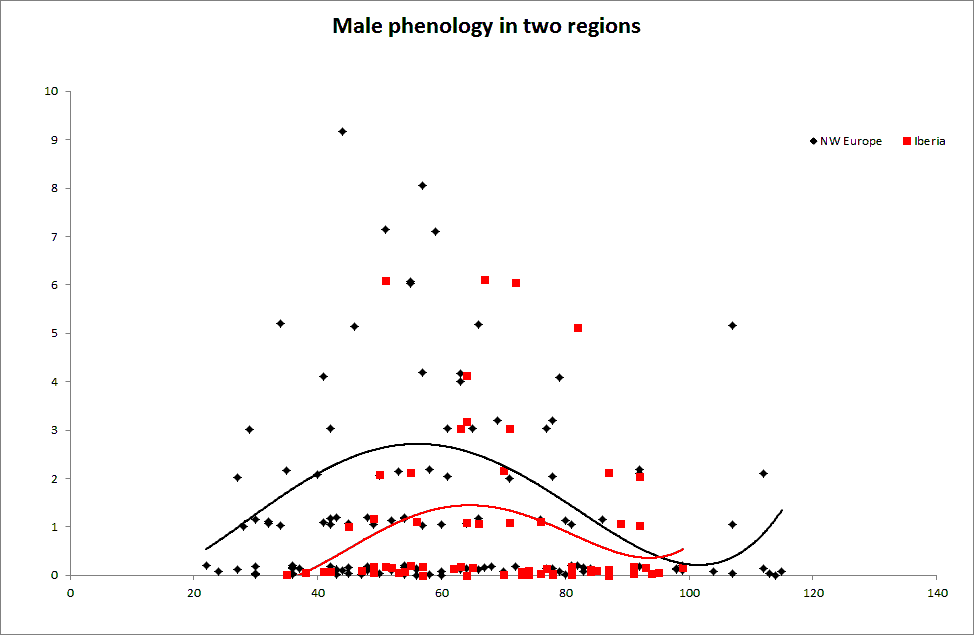You are probably wondering about the results that all these transect data has generated so far. Currently, there are 137 volunteers registered and new volunteers are already registering for the new season. More than half of them come from the UK, while Spain and Belgium are the next important countries of origin.
Altogether, 34 transects have been registered. The transects follow a very similar distribution as the volunteers, most transects lie in UK and Spain (9 each), followed by Belgium (5) and Portugal (4).
A total of 193 transect walks have been entered. These include 58 walks from the period 2012-2015 (before the site was operational) from three Belgian transects. In 2016, 52 transect walks were registered, coming from 9 different transects (4 from Belgium, 3 from Portugal, 1 from Switzerland and 1 from Germany). In 2017, 83 transect walks were added from 17 transects (7 Spain, 3 UK, 3 Netherlands, 2 Germany, 1 Switzerland and 1 Portugal).
Individual transects have been walked inbetween 1 and 11 times per year in 2016-2017 (mean 5.2). From most transects, we received data from at least three transect walks per year which makes the data useful for further analysis in the future but ideally it should be at least six transect walks per year (15 out of 26 cases). The most active ‘volunteers’ were from Portugal and Spain and entered 31 and 26 transect walks respectively. However, both represent an organisation and entered data from several people and transects.
In total, all entered data resulted in 176 stag beetle observations in 2017 and 100 in 2016. These observations include 68 female, 185 males and 23 unknowns. Regarding their activity, 156 stag beetles were seen flying, 70 non-flying and the remaining 50 distributed over other activities (dead, copulating, unknown, changing). The maximum was 17 stag beetle observations during a single transect walk while 59 transect walks had no activity.
A trend cannot be shown yet as we have data from only a few transects which were walked in 2016 and 2017 (but lots of 2017 data is still missing). Also the number of transects is to limited and the time scale is too short for any reliable trend or estimation of the year-to-year variation. Nevertheless some analyses are already possible.
For instance, we can notice that the season seems to be a bit earlier in North-western Europe (UK, Belgium, the Netherlands, Germany and Switzerland) compared to Iberia (Spain and Portugal) as depicted on the graph below. On the X-axis, the day is given starting from the 1st of May.


